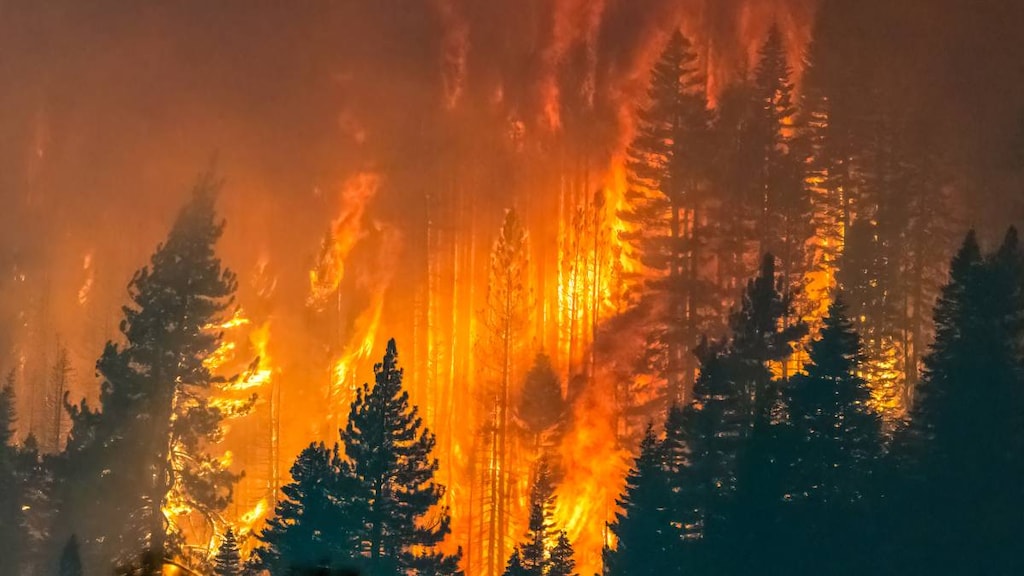Protecting yourself from wildfire smoke

Alaska, Texas and Northern California have been battling an historic wildfire season. The dense smoke from the wildfires pollutes the air and compromises its quality. It can make it hard to breathe, impact the respiratory system and cause a range of health problems.
Wildfire smoke contains a combination of gases and fine particles from burning vegetation, buildings, water vapor and other organic and man-made materials. The air quality is affected by these particles, the higher the air quality level the more it becomes a health hazard.
The most vulnerable people at risk from wildfire smoke are:
- Outdoor workers
- Older adults
- Pregnant women
- Children
- People with heart conditions
- People with pre-existing respiratory conditions like asthma and chronic obstructive pulmonary disease (COPD)
- People with pre-existing cardiovascular conditions include heart failure, angina and ischemic heart disease
- Homeless people
- People with a compromised immune system
Symptoms of smoke inhalation
Wildfire smoke can make anyone sick. The small particles in the smoke can cause harm in multiple ways. Symptoms can vary depending on how close the fire is - the worse the smoke is outside, the worse the symptoms can be. Smoke exposure symptoms include:
- coughing
- trouble breathing normally
- wheezing and shortness of breath
- burning or stinging eyes
- scratchy throat
- runny nose
- irritated sinuses
- headaches
- tiredness
The smoke can also exacerbate the symptoms of respiratory and heart problems in people who already have these conditions. Seek medical help straight away if you get these symptoms:
- chest pain
- fast heartbeat
- asthma attacks
Tips for protecting yourself from smoke exposure
- Check local air quality reports. If a wildfire is burning nearby, listen to the news and public announcements. Look up the US Air Quality Index or Spare the Air alert sites for information on air quality in your area before going outdoors.
- Check visibility guides. Visibility guides measure the amount of particles in the surrounding air in the community. If these guides are available in your area they will allow you to work out the air quality based on how far you can see and plan your activities for the day. The worse the visibility the worse the conditions are outdoors.
- Limit outdoor time. If visibility is not good or it is smoky outdoors avoid activities such as running, mowing the lawns or letting children play outdoors, especially if they suffer from asthma. Stay indoors if advised.
- Keep your indoor air as clean as possible. Keep doors and windows closed. Run an air conditioner on a recirculate setting, or run an indoor air filter with particle removal in the room you spend the most time in.
- Avoid using items that cause smoke. Do not smoke or use items such as candles and wood fireplaces.
- Avoid activities that add to indoor air pollution. Avoid vacuuming or sweeping as this stirs up any particles already in your home. Also avoid frying or broiling food and using gas powered appliances.
- Wear a mask. Paper or cloth masks do not provide protection from smoke particles. N95 respirators worn correctly provide more protection and are useful for those with respiratory conditions.
- Develop an action plan. Especially develop a plan if you have pre-existing respiratory or cardiovascular conditions, or are in another group at higher risk from wildfire smoke. Talk to your healthcare provider and follow the action plan they advise. Stay indoors as much as possible, make sure you have stocked on your medications, organize home deliveries for the recommended supplies. Make sure you can evacuate quickly if necessary.
- Prepare your home and surroundings. Taking some simple actions can help reduce the risk of fire to your home and community:
- You can help fire officers by keeping the streets and roads clear so fire engines can safely and easily maneuver around the area. This also helps people to evacuate more quickly if needed.
- Make sure fire hydrants are visible and accessible
- Cut back trees near your house and clear any dry flammable vegetation like leaves from around your house, streets and community areas such as parks
- Find more tips on our How to prepare for a natural disaster article.
Bottom line
- Pay attention to news, public announcements and stay indoors if advised
- Always check visibility and air quality levels before going outdoors
- Limit time outdoors to reduce exposure to the wildfire smoke
- Talk to your healthcare provider to put a plan in place to help reduce any symptoms if you are in a high risk group
Article references
- National Interagency Fire Center. National Fire News. National Preparedness Level 3. July 12, 2022. Available at: https://www.nifc.gov/fire-information/nfn, [Accessed August 10, 2022].
- Centers for Disease Control and Prevention (CDC). Air quality. Particle pollution. September 4, 2019. Available at: https://www.cdc.gov/air/particulate_matter.html. [Accessed August 10, 2022].
- Centers for Disease Control and Prevention (CDC). Natural disasters and severe weather. Wildfire smoke. December 27, 2013. Available at: https://www.cdc.gov/disasters/wildfires/smoke.html. [Accessed August 10, 2022].
- Centers for Disease Control and Prevention (CDC). Air quality. Protect yourself from wildfire smoke. July 11, 2022. Available at: https://www.cdc.gov/air/wildfire-smoke/default.html. [Accessed August 10, 2022].
- Arizona Department of Health Services. Wildfires. Health effects of smoke from wildfires. Available at: https://www.azdhs.gov/documents/preparedness/epidemiology-disease-control/extreme-weather/wildfires/health-effects-wildfire-smoke.pdf. [Accessed August 10, 2022].
- United States Environmental Protection Agency. Particulate Matter Pollution (PM). How Smoke from Fires Can Affect Your Health. Updated November 16, 2021. Available at: https://www.epa.gov/pm-pollution/how-smoke-fires-can-affect-your-health. [Accessed August 10, 2022].





